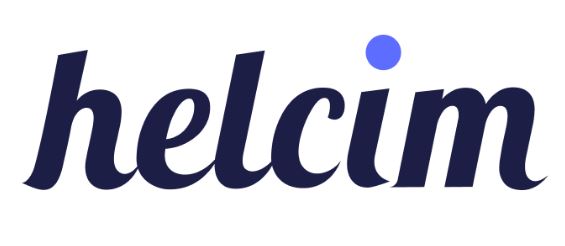When your clients receive your invoices, one of the most important questions that they will have is, “how long do I have to pay?” If your invoice has unclear repayment stipulations, clients might deliver funds late. This possibility can negatively impact your relationship with them and disrupt your cash flow.
Fortunately, you can avoid these headaches by setting clear invoice payment terms when billing clients. Join us as we explore what invoice payment terms are and identify the advantages they provide.
What are invoice payment terms?
Invoice payment terms are precisely what they sound like. They are a set of terms or stipulations that specify how long a client has to pay an invoice and how they should remit payment. Your payment terms can also include late fee schedules, early payment discounts, and other information.
These invoice payment terms should not be overly complicated or lengthy. Instead, they need to set clear expectations in easy-to-digest language. This setup will minimize confusion and ensure that everyone is on the same page.
How do invoice payment terms work?
There are many different types of invoice payment terms. Here are some of the most common ones.
- PIA: Payment in advance (PIA) terms require clients to pay a deposit in order to receive services.
- Net 7, 10, 15, 30, 60, or 90: Net invoice payment terms are repayment conditions that provide clients with a predetermined amount of time to settle debts. For instance, “net 7” means that clients have seven days to deliver payment after receiving the invoice.
- EOM: End-of-month (EOM) terms stipulate that payment is due at the end of the month in which the invoice is received. The downside to this setup is that clients will have different payment windows depending on when in the month they received the invoice.
- 21 MFI: “MFI” means “month following invoice.” If you use 21 MFI terms, payment is due on the 21st of the month following the month in which the invoice was received. For instance, if you deliver a 21 MFI invoice in August, payment is due on Sept. 21.
- COD: Cash on delivery (COD) invoicing requires clients to deliver payment when they receive a delivery or service.
- CND: CND means “cash next delivery” and is used when businesses have recurring interactions with clients at regular intervals. These terms require clients to pay for previous deliveries when receiving subsequent ones.
- CBS: Cash before shipment (CBS) is similar to PIA. Some businesses simply prefer this acronym as opposed to PIA.
- CIA: Cash in advance (CIA) terms require clients to pay the full amount before receiving services or deliveries.
- CWO: Cash with order (CWO) terms are similar to CIA terms. Customers are required to pay for their service or goods when placing an order.
- 1MD, 2MD: 1MD means one monthly credit payment, and 2MD means one monthly credit payment plus an additional calendar month. 1MD/2MD terms are used for recurring delivery services. These terms allow clients to place orders on credit for up to one or two months.
- Stage payments: Stage payments allow customers to pay for purchases in smaller increments.
- Forward dating: Forward dating is the process of changing the invoice date so that clients can deliver payment after receiving goods.
- Accumulation discounts: This term refers to discounts for making large volumes of purchases.
- Partial payment discount: When sellers need to boost cash flow, they can offer discounted repayment terms to encourage clients to pay sooner.
- Rebate: Rebates are partial refunds that are sent to buyers after purchases are made.
- Contra: Contra invoice terms allow you to offset the balance of a sales invoice by subtracting the value of a purchase invoice — these terms are useful when you and a client make purchases from one another.
Why are payment terms important?
Payment terms ensure that you and your clients have clear expectations regarding when invoice payments are due and how payment should be remitted. More importantly, setting clear payment terms protects your cash flow and gives you a means of seeking recourse should a client refuse to deliver funds for services rendered.
Example of payment terms on invoices
Since net 30 terms are among the most popular types of invoice payment terms, let’s look at an example of this set of stipulations.
For our example, let’s say that you deliver an invoice to a client on August 1st and set net 30 terms. The client has to remit payment in 30 days or fewer, which means that payment is due by August 31st. You can apply this same set of net terms to other lengths as well, including 7, 60, or 90-day time frames.
5 top benefits of invoice payment terms
The most notable benefits of setting invoice payment terms are outlined below:
Clear payment terms
The most obvious benefit of setting invoice terms is that your clients know exactly what sort of agreement they are entering into. They can plan accordingly to ensure that they settle all outstanding invoices by the given deadline.
Stay on top of receivables
When you use inconsistent or vague payment terms, it is virtually impossible for your accounting department to stay on top of outstanding invoices.
By adopting a standardized set of invoice payment terms, you can significantly cut down on confusion and make life a whole lot easier for your accounting staff. In the long term, this will help you collect a larger percentage of payments, bolster your cash flow, and make freight invoice audits run more smoothly.
Legal reasons
Should a dispute arise regarding invoice payment, having clearly-defined terms on the invoice documents will help protect your company from non-payment. These terms will be particularly important if you have to take formal legal action against one of your clients.
On-time payments
If you have ever received late payments or had to chase down clients to settle invoices, you know just how frustrating the entire experience can be. While adopting transparent invoice payment terms will not completely eliminate the chances of getting paid late, it will certainly help you avoid this annoying scenario.
Better customer relationships
Customers appreciate it when you are direct and upfront about your expectations, service terms, and billing practices. By adopting reasonable invoice terms, you can strengthen customer relationships and set the stage for long-standing partnerships that benefit all involved.
Which invoice terms should my business adopt?
When scheduling invoice payments, you have the freedom to choose from a multitude of different payment terms. While it is great to have options, too many choices can make it difficult to decide which set of invoice payment terms are the right match for your industry and client base.
If you use invoice payment terms that are too flexible, you might experience erratic cash flow variations. Conversely, overly stringent payment terms can strain relationships with clients and cost you business in the long term.
With that in mind, many business leaders find net 30 terms to be the best option for their organizations. To recap, net 30 terms provide clients with a 30-day window to settle outstanding invoices.
FAQ
Payment terms significantly impact a business’s cash flow, risk management, and relationships with customers and suppliers. These terms dictate when payments are received, which influences liquidity, potentially affects profitability, and can either mitigate or contribute to financial risks, all while shaping interactions with stakeholders.
Negotiating payment terms can enhance a company’s cash flow and profitability by allowing more time to use customer payments before settling supplier invoices, and it can foster stronger business relationships by aligning payment expectations with the financial realities of customers and suppliers.
Credit terms being clearly stated on an invoice ensures both parties understand the payment expectations, reducing misunderstandings and potential late payments, and helps maintain a healthy business relationship by providing transparency about when payment is due.


